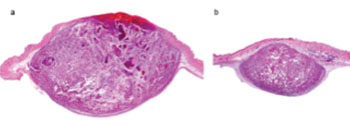Diabetes Drug Shows Promise as an Anticancer Immunotherapeutic Agent
By LabMedica International staff writers
Posted on 01 Jul 2015
Treatment with the anti-diabetes drug sitagliptin of some types of cancer in a mouse model was found to increase the infiltration of T lymphocytes into tumors and, in combination with existing immunotherapies, eradicate the tumor. Posted on 01 Jul 2015
Sitagliptin modulates diabetes symptoms by competitively inhibiting the enzyme dipeptidylpeptidase 4 (DPP4). This enzyme breaks down the incretins GLP-1 and GIP, gastrointestinal hormones released in response to a meal. By preventing GLP-1 and GIP inactivation, they are able to increase the secretion of insulin and suppress the release of glucagon by the alpha cells of the pancreas, which drives blood glucose levels towards normal. As the blood glucose level approaches normal, the amounts of insulin released and glucagon suppressed diminishes, thus preventing hypoglycemia, which is seen with some other oral hypoglycemic agents.

Image: Histological section of two mouse melanomas: (a) untreated and (b) treated with sitagliptin, a specific DPP4 inhibitor (Photo courtesy of Institut Pasteur).
Investigators at Institut Pasteur (Paris, France) reported in the June 15, 2015, online edition of the journal Nature Immunology that inhibition of DPP4 enzymatic activity in mice by oral administration of sitagliptin enhanced tumor rejection by preserving biologically active CXCL10 and increasing trafficking into the tumor by lymphocytes expressing the counter-receptor CXCR3.
CXCL10 (C-X-C motif chemokine 10 also known as interferon gamma-induced protein 10) is secreted by several cell types in response to IFN-gamma. These cell types include monocytes, endothelial cells, and fibroblasts. CXCL10 has been linked to several functions, such as chemoattraction for monocytes/macrophages, T-cells, NK cells, and dendritic cells, promotion of T-cell adhesion to endothelial cells, antitumor activity, and inhibition of bone marrow colony formation and angiogenesis.
This chemokine elicits its effects by binding to the cell surface chemokine receptor CXCR3.
DPP4 inhibition improved adjuvant-based immunotherapy, adoptive T-cell transfer, and checkpoint blockade, findings that provide direct in vivo evidence to support the use of DPP4 inhibitors for stabilizing biologically active forms of chemokines as a strategy to enhance tumor immunotherapy.
Related Links:
Institut Pasteur













